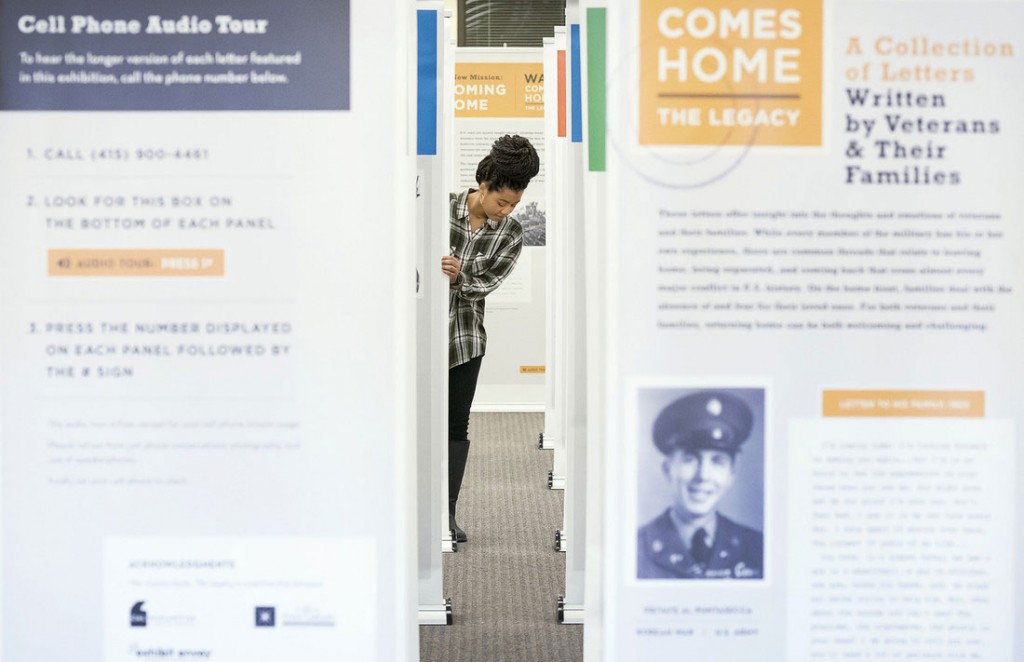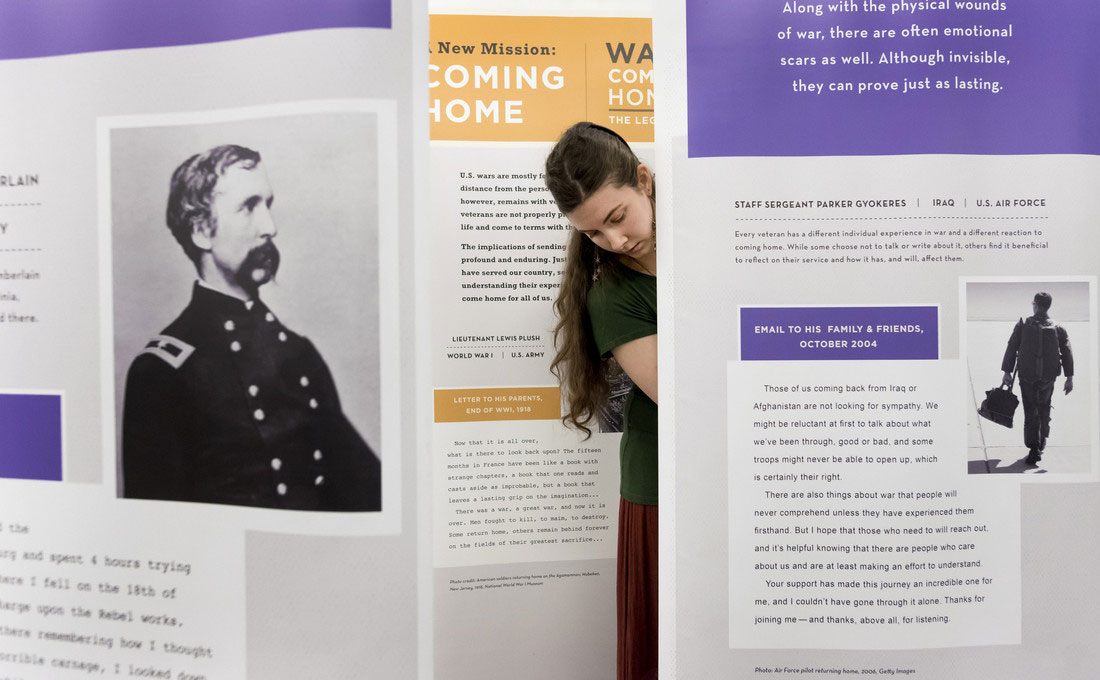War letters on display at Ottenheimer Library
In 1953, U.S. Army Private Al Puntasecca excitedly wrote to his family that he was coming home from the Korean War after serving a year overseas.
“I’m looking forward to seeing you again … but I’m in no hurry to see the expressions on your faces when you see me,” Puntasecca wrote. “You might even ask me for proof I’m your son.”
After being in the war, Puntasecca worried his family would not recognize him. He pointed out that people will break their backs to help a man in a wheelchair, on crutches, or with one arm, but he wondered who would help the soldiers returning from war with invisible wounds.
“But, what about the wounds you can’t see? The phantoms, the nightmares, the ghosts in your head?” he asked. “I am going to tell you now, you’ll need a lot of patience with me. Patience, and understanding. We all will.”
Puntasecca’s letter is one of more than a dozen written between American soldiers and their loved ones that are on display at the University of Arkansas at Little Rock Ottenheimer Library.
The exhibit, “War Comes Home: The Legacy,” will be on display until March 10. The letters showcase veterans and their families adjusting to civilian life together and facing the long-term costs of war — from the Civil War era to the wars in Afghanistan and Iraq.

The earliest letter was written by Gen. Joshua Lawrence Chamberlain on Jan. 29, 1882, to his sister. It references a visit to the site of the Battle of Petersburg.
In 1864, Ulysses S. Grant’s Army of the Potomac and Robert E. Lee’s Army of Northern Virginia fought in Petersburg, Virginia, about 25 miles south of the Confederate capital of Richmond, Virginia. The two armies would not disband until Lee’s surrender on April 9, 1865.
Members of the public may visit the exhibit for free during open library hours. The library’s normal hours, which are subject to change, are 7:30 a.m. to 12:30 a.m. Monday through Thursday, 7:30 a.m. to 5 p.m. Friday, 9 a.m. to 5 p.m. Saturday, and 1 p.m. to 12:30 a.m. Sunday.
“War Comes Home: The Legacy” is a partnership between Cal Humanities, the California State Library, and Exhibit Envoy. It is supported in part by the National Endowment for the Humanities, The BayTree Fund, The Whitman Fund, and the U.S. Institute of Museum and Library Services under the provisions of the Library Services and Technology Act, administered in California by the state librarian.
The exhibit is based on a collection called the Center for American War Letters. It’s curated by Andrew Carroll, the director of the center, and John Benitz, a professor at Chapman University. It was brought to UA Little Rock thanks to funding from the Arkansas Humanities Council.
For more information, contact Chelsea Young at kcguess@ualr.edu or 501.569.8018.
In the upper right photo, Chelsea Young sets up the “War Comes Home: The Legacy” exhibit at Ottenheimer Library. Photo by Lonnie Timmons III/UA Little Rock Communications.
